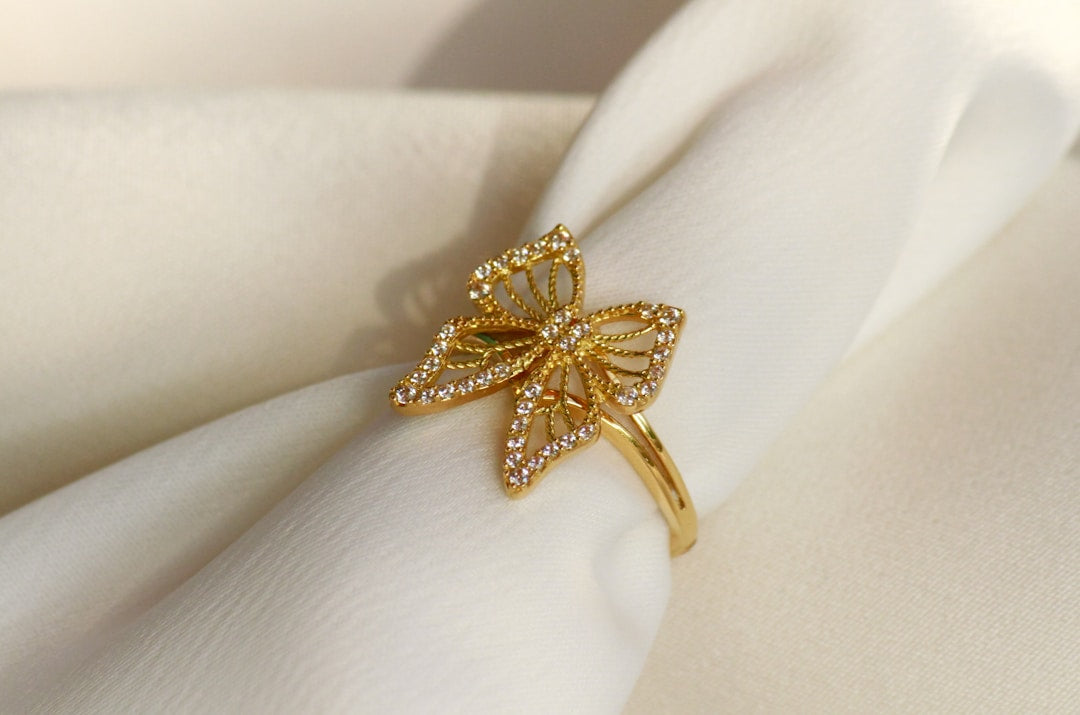Why Does Brass Jewelry Tarnish? Understanding the Basics
Brass, a handsome alloy primarily composed of copper and zinc, possesses a warm, golden hue that makes it a popular choice for men's jewelry like cuffs, rings, and pendants. However, like many metals containing copper, brass is susceptible to tarnishing. This isn't a defect; it's a natural chemical process. Tarnish occurs when the copper component of the brass reacts with elements in the environment – primarily oxygen, moisture, skin oils, sweat, and chemicals found in soaps, colognes, or even the air itself (like sulfur compounds). This reaction forms a layer of copper oxide or other compounds on the surface, dulling the metal's shine and often creating a greenish or dark patina.
While some appreciate the aged look of tarnished brass, most prefer to maintain its original luster. Understanding that tarnish is a surface phenomenon is key – it means that with the right approach, learning how to clean brass jewelry is straightforward and can effectively restore its brilliance.
Before You Start: Essential Prep for Cleaning Brass Jewelry
Before diving into cleaning methods, a little preparation ensures you use the right technique and protect your valuable accessories:
- Identify Your Brass: Is it solid brass or brass-plated? Solid brass can withstand more vigorous cleaning, while plated brass requires a much gentler touch to avoid stripping the thin brass layer. A simple test: brass is not magnetic, but the base metal underneath plating (often steel or zinc) might be. If a magnet sticks, it's likely plated. Also, look for signs of wear where a different colored metal shows through – another indicator of plating. When in doubt, assume it's plated and use the mildest cleaning method.
- Check for Lacquer: Some brass jewelry is coated with a clear lacquer to prevent tarnishing. If your piece looks shiny and doesn't tarnish easily, it might be lacquered. Lacquered brass generally only needs wiping with a soft, damp cloth. Abrasive cleaning will damage or remove the lacquer. Most cleaning methods discussed here are for unlacquered brass.
- Consider Gemstones or Other Materials: If your brass jewelry incorporates gemstones, wood, leather, or other materials, exercise caution. Acidic cleaners (like lemon juice or vinegar) and even prolonged soaking can damage porous stones (e.g., turquoise, pearls, opals) or affect other non-metal components. Spot cleaning the brass carefully might be necessary.
-
Gather Your Supplies: Have everything ready before you start. Common items include:
- Soft cloths (microfiber, flannel, or an old cotton t-shirt)
- A soft-bristled brush (like an old toothbrush)
- Small bowls
- Mild dish soap
- Warm water
- Lemon
- Salt or Baking Soda
- White Vinegar
- Flour (optional, for paste)
- Ketchup (optional)
- Commercial brass cleaner (optional)
- Polishing cloth
- Test in an Inconspicuous Area: Especially if you're unsure about the material or trying a new method, test the cleaning solution on a small, hidden part of the jewelry first (like the inside of a ring or the back of a pendant) to see how the metal reacts.
Simple & Gentle Methods: How to Clean Brass Jewelry Regularly
For light tarnish or regular maintenance, simple methods are often sufficient and the safest starting point.
Method 1: Soap and Warm Water
This is the gentlest approach and should be your first line of defense for maintaining your brass accessories, especially if they are brass-plated or have delicate components.
Steps:
- Fill a small bowl with warm water.
- Add a few drops of mild dish soap (avoid harsh detergents).
- Swish the water to create suds.
- Submerge the brass jewelry briefly (if safe – avoid soaking pieces with gemstones or non-waterproof elements). For pieces you can't submerge, dip a soft cloth in the soapy water.
- Gently rub the surface with a soft cloth or use a soft toothbrush to get into crevices and details. Don't scrub aggressively, especially on plated items.
- Rinse the jewelry thoroughly under clean, running warm water. Ensure all soap residue is removed, as it can contribute to dullness.
- Crucially, dry the piece completely with a soft, clean cloth. Leaving moisture on the brass will encourage further tarnishing. Pay extra attention to nooks and crannies.
This basic technique is excellent for routine upkeep and learning how to clean brass jewelry without risk.
Tackling Heavier Tarnish: DIY Brass Cleaning Solutions
If soap and water aren't cutting through the tarnish, natural household acids can often do the trick. Remember to test these methods first and use them cautiously on potentially plated items.
Method 2: Lemon Juice (or Vinegar) and Salt/Baking Soda
The mild acid in lemon juice or vinegar reacts with the copper oxide (tarnish), helping to dissolve it. Salt or baking soda acts as a gentle abrasive to help lift the loosened tarnish.
Using Lemon Juice:
Option A (Paste): Squeeze the juice of half a lemon into a small bowl. Add salt or baking soda gradually, stirring until you form a paste roughly the consistency of toothpaste.
Option B (Direct): Cut a lemon in half. Sprinkle salt directly onto the cut surface of the lemon.
Steps:
- Apply the paste directly to the tarnished areas using a soft cloth or your fingers. Alternatively, rub the salted lemon half gently over the brass surface.
- Rub gently, focusing on the tarnished spots. You should see the tarnish start to lift.
- For stubborn tarnish, you can let the paste sit for 5-10 minutes, but monitor it closely. Don't leave it on for extended periods, especially if unsure about plating.
- Rinse the jewelry extremely well under warm running water to remove all traces of lemon and salt/baking soda. Acid residue can cause pitting over time.
- Dry thoroughly with a soft cloth.
Using Vinegar:
Vinegar offers another effective way how to clean brass jewelry using pantry staples.
Paste Method: In a bowl, mix equal parts salt and flour. Add just enough white vinegar to create a thick paste.
Steps:
- Apply the paste generously over the tarnished brass.
- Let the paste sit and dry for about 15-30 minutes (or up to an hour for heavy tarnish).
- Rinse the paste off thoroughly with warm water. You may need to gently rub stubborn paste away with a soft cloth while rinsing.
- Dry the piece completely with a clean, soft cloth.
Method 3: The Ketchup Trick
It might sound unusual, but ketchup can be surprisingly effective on brass tarnish. The mild acidity from the tomatoes helps break down the oxidation.
Steps:
- Apply a thin layer of regular ketchup onto the tarnished brass surface.
- Let it sit for a few minutes for light tarnish, or up to an hour for heavier buildup.
- Wipe the ketchup off with a clean, damp cloth.
- Rinse the jewelry thoroughly under warm water to remove any sugary residue.
- Dry completely with a soft cloth. This method is particularly useful for intricate pieces, as the ketchup can get into small details.
Using Commercial Brass Cleaners Safely
When DIY methods don't achieve the desired results, or for very heavy tarnish, a commercial brass cleaner might be necessary. These products are specifically formulated to remove oxidation from brass.
Important Considerations:
- Choose the Right Product: Read labels carefully. Some cleaners are abrasive polishes, while others are chemical dips. Ensure the product is suitable for jewelry and specifically for brass. Some may state if they are safe for plated items or specific gemstones, but always exercise caution.
- Follow Instructions: Adhere strictly to the manufacturer's directions regarding application, waiting time, and rinsing.
- Ventilation is Key: Use commercial cleaners in a well-ventilated area, as they often produce strong fumes.
- Protect Your Skin: Wear gloves to avoid skin irritation.
- Rinse and Dry Thoroughly: Just like with DIY methods, rinsing off all chemical residue and drying the piece completely is vital to prevent damage or further tarnishing.
Commercial cleaners can be very effective, but they represent a more aggressive approach to how to clean brass jewelry, so use them judiciously.
Important Considerations for Cleaning Brass Jewelry
Beyond the cleaning methods themselves, keep these factors in mind:
Solid Brass vs. Brass Plated Jewelry
We touched on this earlier, but it bears repeating: knowing the difference is crucial. Aggressive scrubbing or harsh chemicals can easily wear away thin brass plating, revealing the base metal underneath and potentially ruining the piece. Always start with the mildest method (soap and water) for plated items and proceed with extreme caution if trying anything stronger. If you're learning how to clean brass jewelry, mastering this distinction is fundamental.
Jewelry with Gemstones or Other Materials
Acids (lemon, vinegar) and chemical cleaners can etch, discolor, or dissolve porous gemstones like pearls, turquoise, opals, coral, and lapis lazuli. They can also potentially loosen glue used in settings or damage organic materials like wood or leather. If your piece has these elements, try to clean only the brass areas, avoiding contact with the sensitive parts. A cotton swab dipped in the cleaning solution can help with precision. When in doubt, consult a professional jeweler.
Lacquered vs. Unlacquered Brass
Most cleaning efforts focus on unlacquered brass, which tarnishes naturally. Lacquered brass has a protective coating. Trying to polish or use chemical cleaners on lacquered brass will likely damage the coating, leading to uneven tarnishing later. If your piece is lacquered, simply wipe it clean with a soft, damp cloth and dry it.
Polishing Your Brass Jewelry After Cleaning
Cleaning removes the tarnish, but polishing restores the high shine and luster. After you've successfully cleaned and thoroughly dried your brass jewelry, take an extra minute to polish it.
- Use a dedicated polishing cloth, such as a jeweler's cloth (often treated with a mild polishing compound) or a clean, soft microfiber cloth.
- Use gentle, circular or back-and-forth buffing motions.
- Polishing helps to smooth the surface microscopically, enhancing its reflectivity and shine.
This final step elevates the result of your efforts in how to clean brass jewelry.
How to Prevent Brass Jewelry from Tarnishing
While knowing how to clean brass jewelry is useful, preventing tarnish in the first place saves time and effort:
- Store Properly: This is the single most effective preventative measure. Keep your brass jewelry in a low-humidity environment. Store pieces individually in small, airtight plastic bags (squeeze out excess air) or in a lined jewelry box with anti-tarnish strips.
- Keep it Dry: Remove brass jewelry before showering, swimming, washing dishes, or engaging in activities that cause heavy sweating. Moisture accelerates tarnishing.
- Avoid Direct Contact with Chemicals: Put your jewelry on last, after applying lotions, colognes, hairsprays, or sunscreens. These products contain chemicals that react with brass.
- Wipe Down After Each Wear: Use a soft cloth to quickly wipe down your jewelry after taking it off. This removes skin oils and moisture accumulated during the day.
- Consider a Sealant (Optional): For unlacquered pieces, you can apply a clear jewelry sealant or wax (like Renaissance Wax). This creates a barrier against air and moisture. Be aware this might slightly alter the finish and will need reapplication over time.
When to Seek Professional Help
Sometimes, DIY cleaning isn't the best option. Consider consulting a professional jeweler if:
- The jewelry piece is a valuable antique or has significant sentimental value.
- You are unsure if the piece is solid brass, plated, or contains sensitive gemstones.
- The piece is intricately designed, making it difficult to clean or dry properly.
- You've tried gentle DIY methods, and the tarnish remains stubborn, or you fear causing damage with stronger methods.
A professional jeweler has the expertise and specialized tools to clean and restore your brass jewelry safely and effectively.

